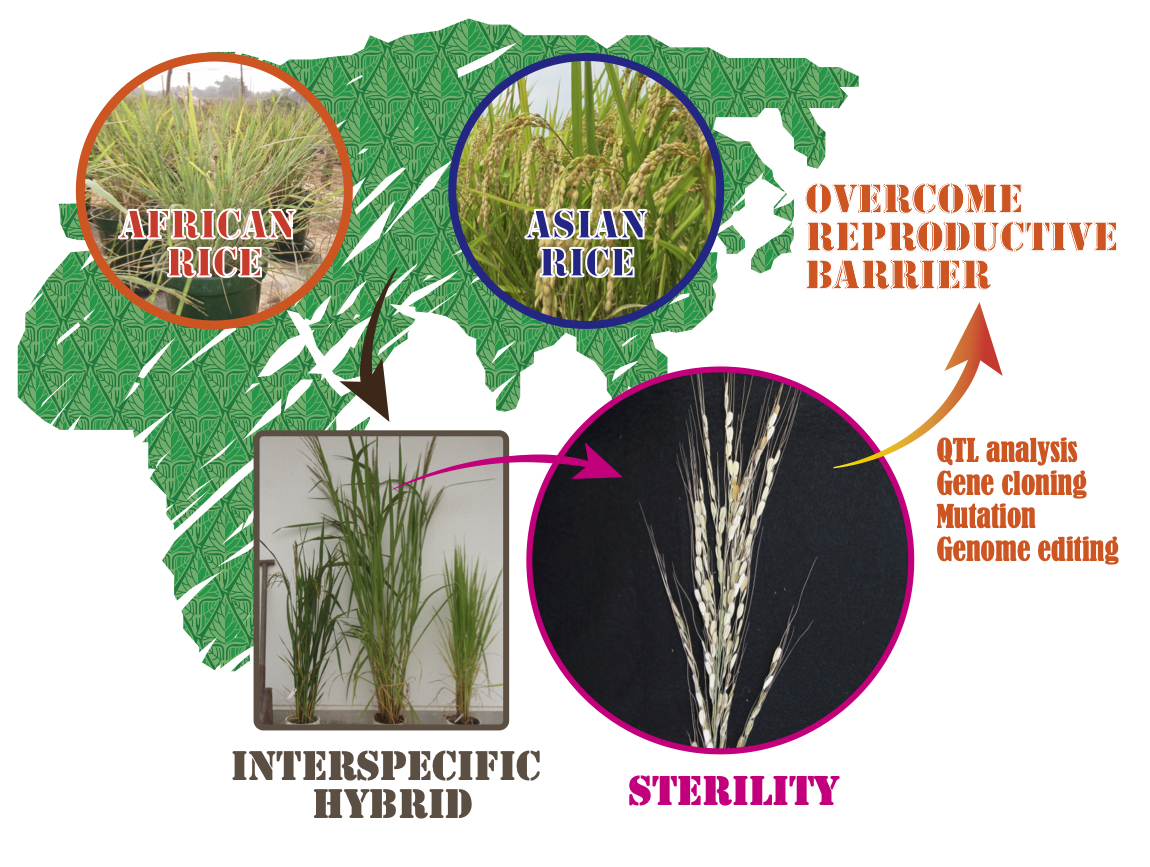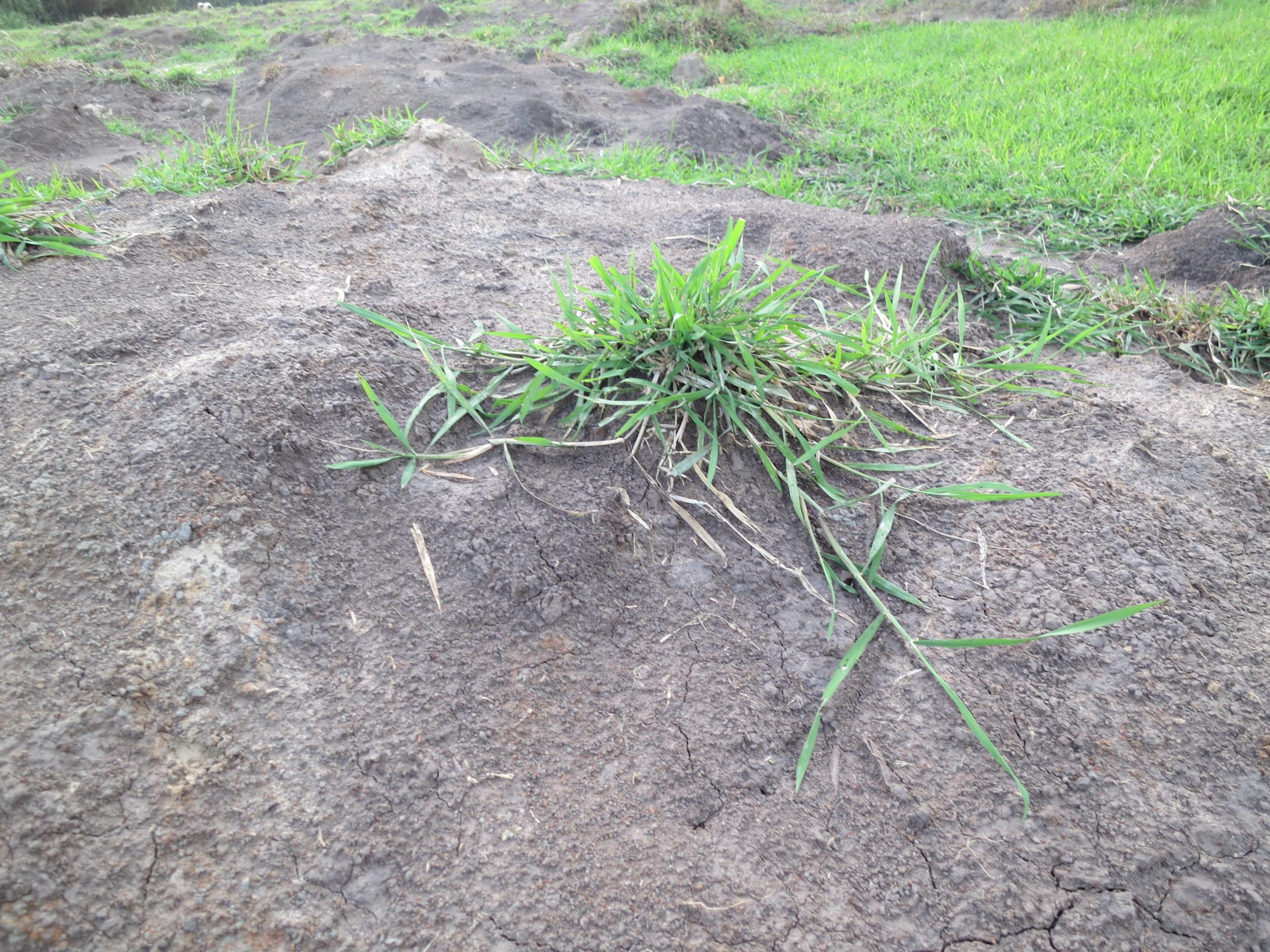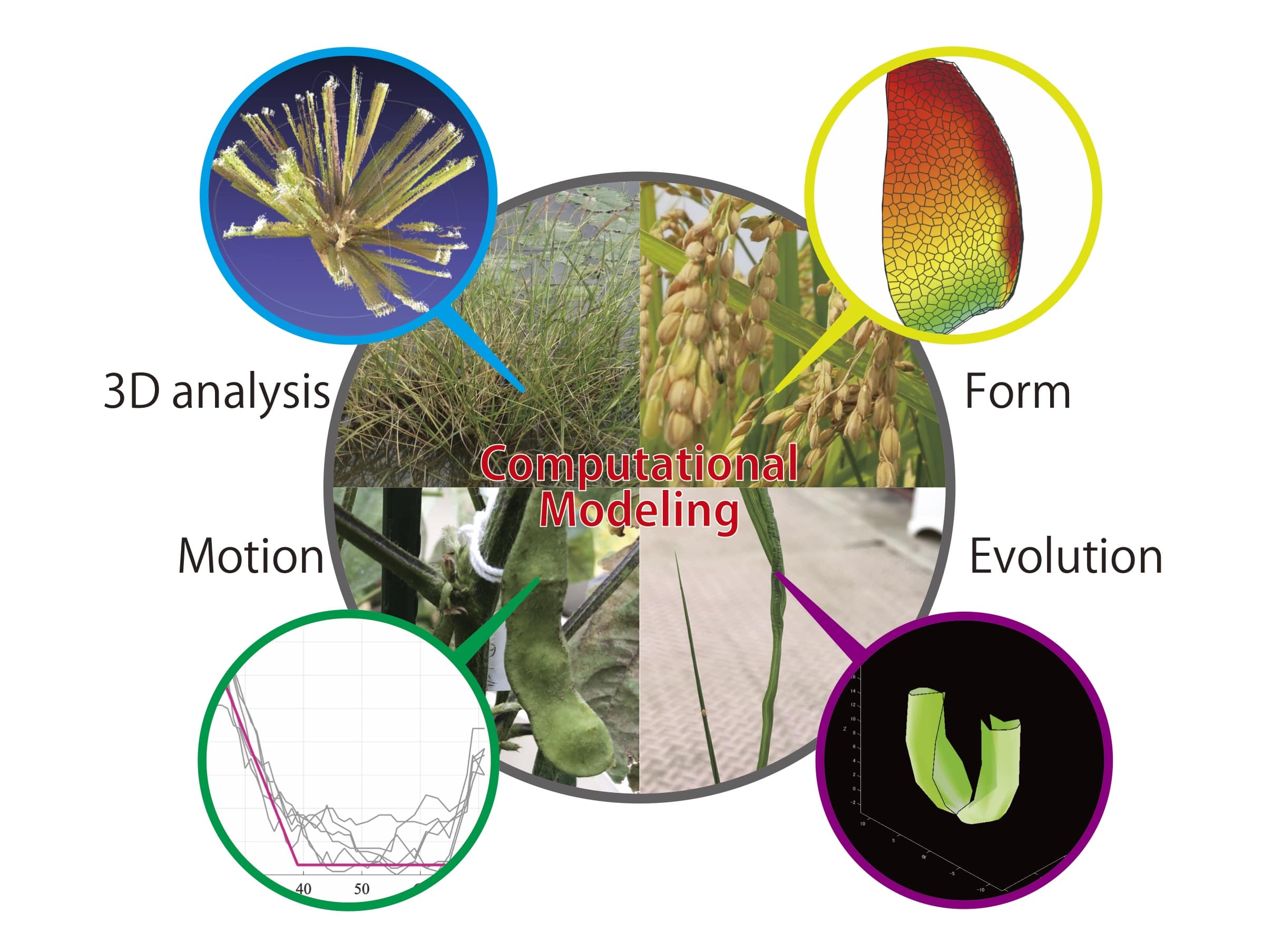The species barrier, known as the reproductive barrier, acts to prevent the exchange of genes between species. The barrier also prevents the creation of new crops through interspecific crossing in breeding.
We use hybrid sterility in rice as a model case of the barrier to understand its molecular mechanisms, its evolution, and the way to overcome it. Focusing on the hybrid sterility observed in Asian and African cultivated rice species, we aim to identify the causal genes and create a new allele, which can avoid the sterility through mutagenesis and genome editing.
Uncovering Hidden Ability of Adaptation of Wild Rice
Wild rice (Oryza rufipogon) grows in the tropics of Asia. The wild rice is thought to be similar to the ancestors of Asian cultivated rice (Oryza sativa), our staple food, and it still retains the appearance of the pre-cultivated rice. One particularly interesting trait that wild rice possesses is an open tillers habit, which allows it to grow horizontally across the ground. This openness extends its own light-receiving area and is considered to be an important trait for survival in natural conditions. So how does wild rice grow horizontally? We are analyzing this problem by combining genetics and mathematical models to study the essential mechanisms that allow wild rice to survive in natural conditions.
Exploring the Nature of Shapes and Dynamics of Plants by Using Computational Modeling
How are the complex shapes and movements of plants controlled? We use mathematical modeling to reproduce the shape and movement of plants by computer to explore their essential intrinsic mechanisms. We are also developing a measurement method to understand the shape and movement of plants.
Moreover, we use models to understand phenomena that are impossible to reproduce, such as the evolution of plants. A variety of crops, such as rice and soybean, are used depending on the individual study. We aim to create new crops based on our understanding of shape and movement mechanisms.



